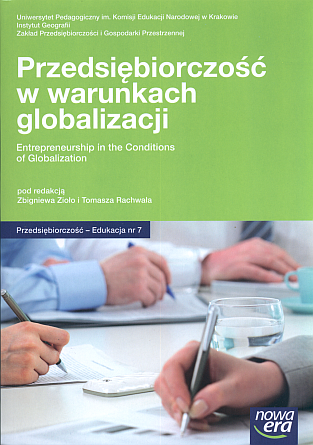The Urban Enterprise – Local Revitalisation Programmes as the Cities’ Revival Tools
DOI:
https://doi.org/10.24917/20833296.7.16Keywords:
przedsiębiorczość miejska, lokalne programy rewitalizacjiAbstract
Owing to widely advertized issue of renewal of urban tissue cities gain their chance for re-birth and “second youth”. These entities struggle with degradation and depopulation through, among others, re-discovering cultural, architectural and historical values alike, restructuring postrailway, post-military and post-industrial areas as well as renovation of old housing estates and other damaged building resources. Next to the degradation of the housing substance, another problem of the cities is demographic crisis. The amount of cities’ inhabitants decreases systematically, the process of ageing of society affects more and more aspects of economy and the decline in population growth as well as mass emigration of young people are not promising. Thus main tasks of cities development became tasks of qualitative revival of material resources and human capital. Considering revitalization as a cities revival tool one have to have in mind it cannot concern only the material structure of a city but has to be spread over the broadly understood social issues. Moreover, the revitalization actions have to be based on a new planning model through involving local societies into planning processes. In this way it can contribute to the integration of residents as well as to the larger identification with place of residence which may be an object of their special care in coming years. To summarise, only such integrated and complex attitude as above may bring expected results of increasing the quality of the cities and the Local Revitalisation Programmes, which are one of the requirements of revitalization programmes studies, may essentially contribute.
References
Domański B., Ziobrowski Z., 2010, Rewitalizacja miast polskich jako sposób zachowania dziedzictwa materialnego i duchowego oraz czynnik zrównoważonego rozwoju – podsumowanie projektu, Instytut Rozwoju Miast, Kraków.
Kawa S., 2006, Możliwości finansowania działań rewitalizacyjnych z wykorzystaniem Funduszy Strukturalnych UE, J.K. Lenartowicz, D. Maciąg (red.), „Czasopismo Techniczne. Seria Architektura”, z. 8–A, Wyd. Politechniki Krakowskiej, Kraków.
Kwiatek J., 1998, Leksykon miast polskich, Wyd. Muza, Warszawa.
Langer P., 2005, Problem rewitalizacji przestrzeni średnich miast w projektach współfinansowanych z funduszy strukturalnych na przykładzie Bochni [w:] Rola planowania przestrzennego w świetle polityki spójności Unii Europejskiej, E. Węcławowicz-Bilska, M. Marx-Kozakiewicz (red.), „Czasopismo Techniczne. Seria Architektura”, z. 15, Wyd. Politechniki Krakowskiej, Kraków.
Skalski K., 2000, Rewitalizacja starych dzielnic miejskich [w:] Odnowa miast – rewitalizacja, rehabilitacja, restrukturyzacja, Z. Ziobrowski (red.), Instytut Gospodarki Przestrzennej i Komunalnej, Kraków.
Podręcznik procedur wdrażania Zintegrowanego Programu Operacyjnego Rozwoju Regionalnego opracowany przez Ministerstwo Rozwoju Regionalnego, http://www.zporr-bzfe.kielce.uw.gov.pl/dokumenty/ pdf/podrecznik_procedur_wdrazan ia _ZPORR.pdf 7. www.poznan.pl/mim/public/s8a/pages.html?co=list&id=1025&ch=1031&instance=1017&lang=pl
www.miasto.hrubieszow.pl/files/bip/plany/rewitalizacja/proj_rew.pdf
www.ebok.olsztyn.eu
www.efs.2004-2006.gov.pl
www.mg.gov.pl/files/upload/10123/Sprostowanie_Rozp_Komisji_1828_8.12.2008_EFRR_EFS_ FS.pdf
Downloads
Published
How to Cite
Issue
Section
License
Articles are published under the terms of the Creative Commons License (CC BY-ND 4.0; Attribution– NoDerivs).

